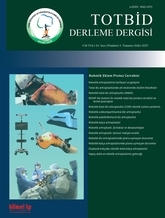
In addition to improved surgical accuracy and enhanced patient satisfaction, robotic-assisted arthroplasty systems offer compelling outcomes in terms of cost-effectiveness. This review examines recent economic analyses in the fields of total knee, unicompartmental knee, and total hip arthroplasty, and evaluates the long-term financial sustainability of robotic systems. Despite their high initial acquisition costs, data from the literature demonstrate that robotic surgery provides significant advantages such as reduced length of hospital stay, lower revision rates, decreased utilization of post-discharge healthcare services, and savings in total episode-of-care costs. Incremental cost-effectiveness ratio (ICER) calculations frequently fall below widely accepted cost-effectiveness thresholds, and in high-volume centers, the investment in robotic systems has been reported to be recoverable within approximately two years. The willingness to pay (WTP) threshold-an essential benchmark in determining whether a health technology is deemed cost-effective-is typically defined as $50,000 to $100,000 per quality-adjusted life year in developed countries. Numerous studies have found that robotic-assisted arthroplasty procedures remain below these WTP thresholds. In light of these findings, when combined with appropriate patient selection and sufficient surgical volume, robotic arthroplasty systems emerge not only as clinically advantageous but also as economically valuable investments within modern healthcare delivery.